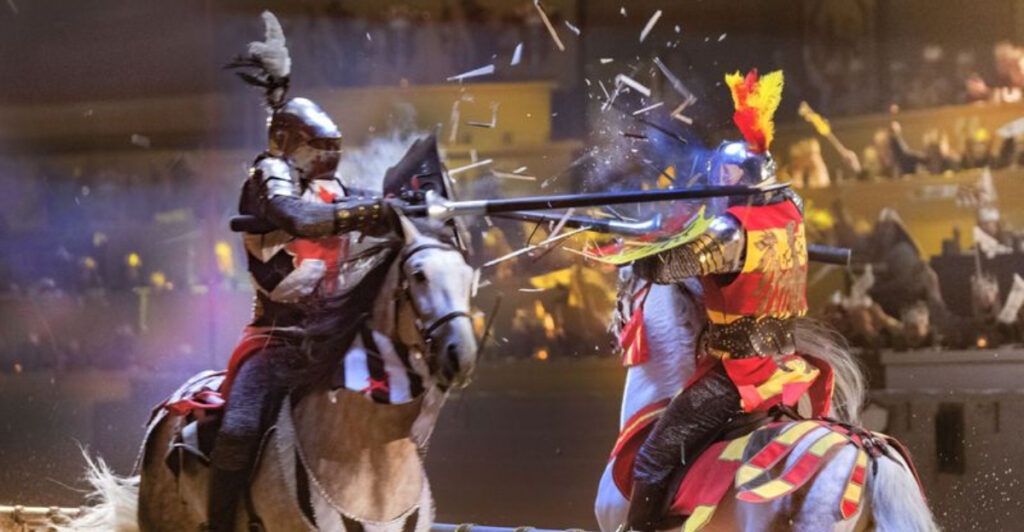Remember when restaurants weren’t just about food, but entire adventures? Themed dining spots once transported us to different worlds, times, and dimensions while we munched on our meals. These immersive experiences combined elaborate décor, costumed staff, and theatrical elements to create unforgettable dining memories. Sadly, many of these beloved establishments have disappeared, victims of changing tastes, economic pressures, or the COVID-19 pandemic.
1. Jekyll & Hyde Club: Where Horror Met Haute Cuisine
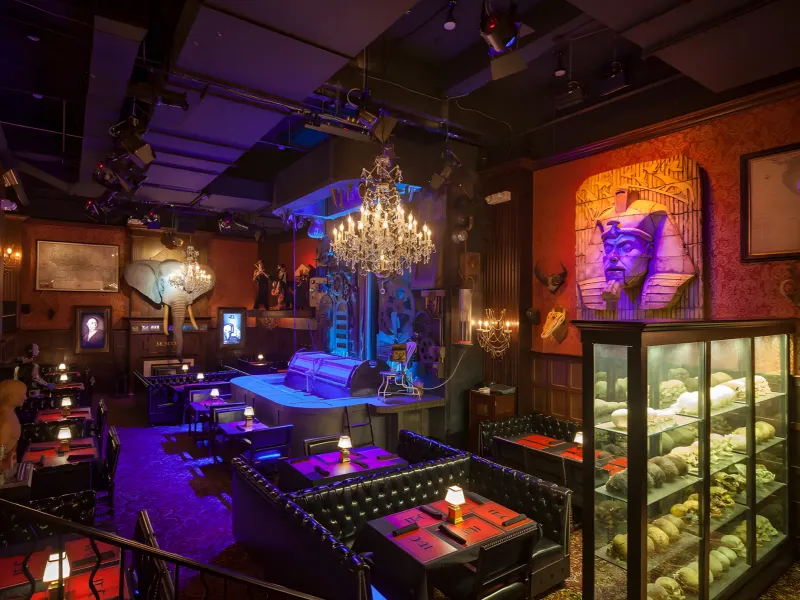
Victorian monsters lurked around every corner of this Greenwich Village haunt. Patrons jumped as gargoyles suddenly came to life and portraits morphed into ghoulish faces while they nibbled on appetizers.
The elaborate production required actors in period costumes to stay in character throughout your meal, making each dining experience uniquely terrifying. Children squealed with delight as monsters emerged from hidden passages.
After surviving for decades, this spooky institution finally succumbed to financial woes during the pandemic, closing permanently in June 2022. The final location shuttered after Chapter 11 restructuring failed to save this beloved fright fest.
2. Mars 2112: The Space Odyssey You Could Eat In
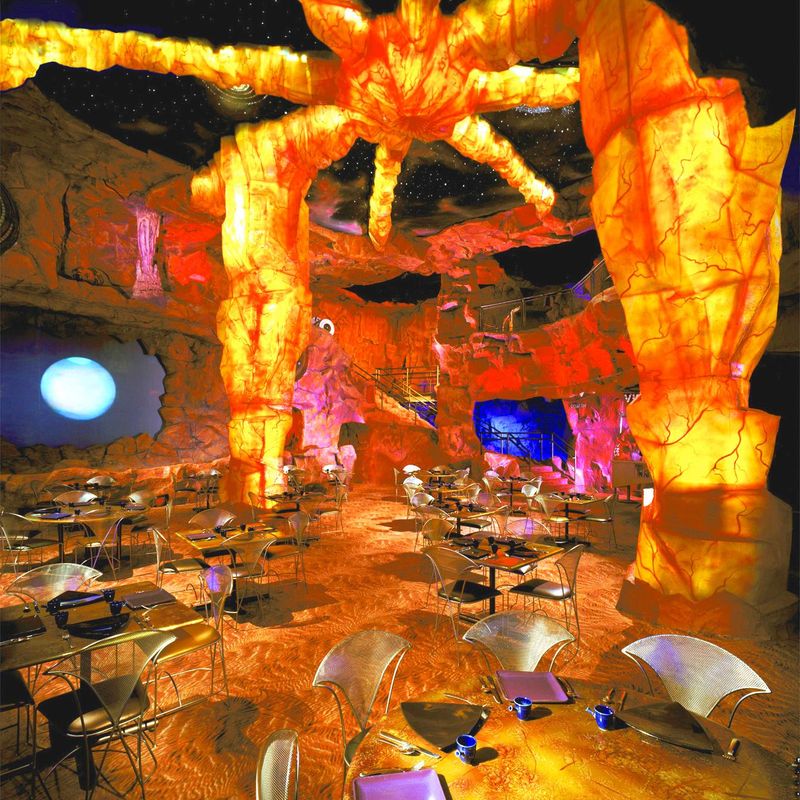
Stepping into a rocket-shaped elevator, visitors were “teleported” to the Red Planet through a simulated space journey complete with turbulence and flashing lights. The massive three-story venue in Times Square featured a Crystal Crater dining room where otherworldly servers in alien costumes delivered cosmic-themed meals.
Kids marveled at the bubbling lava pools and life-sized aliens while parents sipped “Martian Margaritas.” The restaurant even featured an arcade called the Space Station where young astronauts could play futuristic games.
Despite being the largest theme restaurant when it opened in 1998, financial gravity proved too strong. After two bankruptcies, Mars 2112 made its final landing in January 2012.
3. Automat: The Original Fast Food Revolution
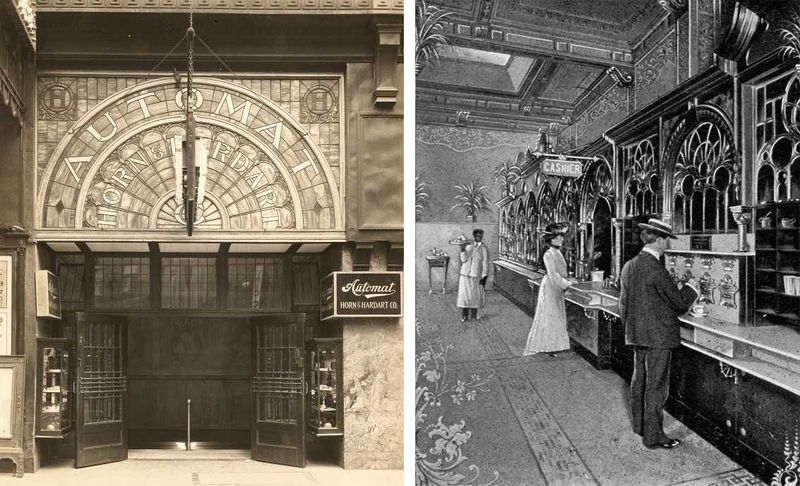
Wall-to-wall vending machines with glass doors revealed tantalizing prepared meals waiting behind tiny windows. Drop in your nickels, turn the knob, and presto – hot food appeared as if by magic! No waiters, no tips, just mechanical efficiency at its finest.
These gleaming Art Deco temples of self-service dining dominated American cities in the early 20th century. Horn & Hardart, the most famous Automat chain, served everything from macaroni and cheese to apple pie in individual portions.
The novelty faded once traditional fast-food chains arrived with drive-thrus and standardized menus. By the 1980s, these once-futuristic feeding stations had vanished from urban landscapes, leaving only nostalgic memories of their chrome-and-glass glory.
4. Rainforest Café: Wild Dining in Suburban Malls
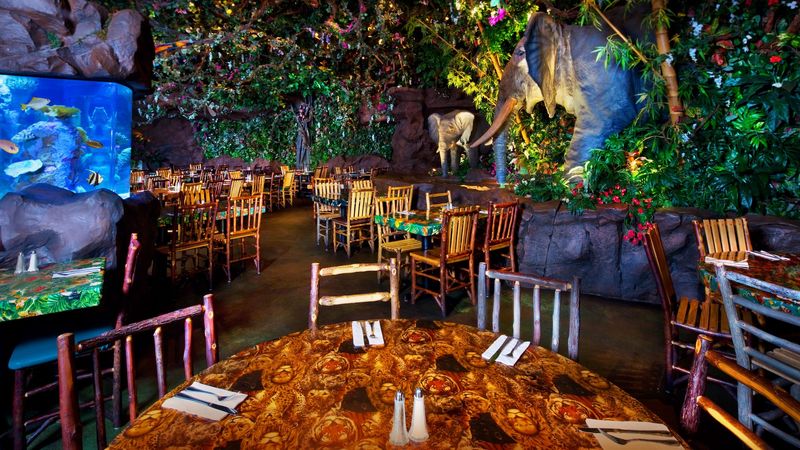
Mechanical monkeys swung overhead while massive fish tanks bubbled beside your table. Every 30 minutes, the lights dimmed as simulated thunderstorms rolled through the dining room, complete with flashing lightning and rumbling sound effects that made children squeal with excitement.
Massive animatronic elephants trumpeted while mechanical butterflies fluttered above dense tropical foliage. The menu featured dishes with jungle-themed names like “Rasta Pasta” and “Python Pasta,” making ordinary mall dining an exotic safari adventure.
While a handful of locations still exist in tourist areas, most Rainforest Cafés have closed as mall traffic declined and maintenance costs for all those mechanical creatures became unsustainable. The magic of dining under a canopy of artificial trees has largely disappeared.
5. Chuck E. Cheese’s: The Original Animatronic Band Experience
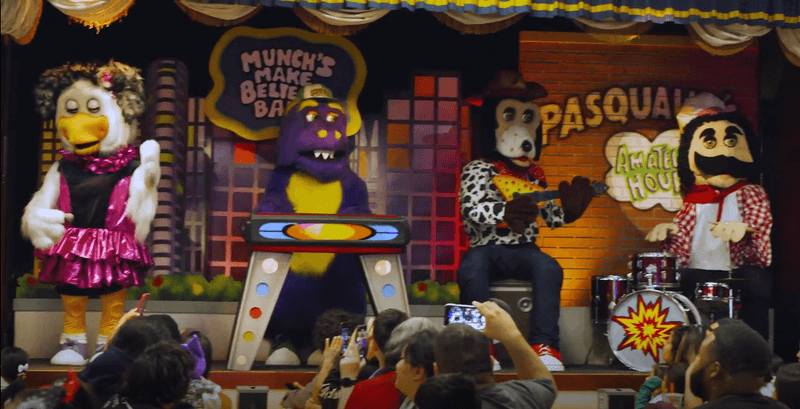
Birthday celebrations reached fever pitch as the curtain rose on Chuck E. Cheese and his robotic band members – Jasper T. Jowls, Mr. Munch, Helen Henny, and Pasqually. These jerky mechanical musicians belted out covers of pop songs while wide-eyed children clutched tokens for arcade games.
Parents nursed mediocre pizzas while kids darted between Skee-Ball lanes and whack-a-mole stations. The prize counter displayed plastic treasures that somehow seemed priceless when purchased with hard-earned tickets.
Though the chain still exists, most locations have eliminated the iconic animatronic shows entirely. Modern Chuck E. Cheese restaurants feature a costumed mascot instead, leaving generations of 80s and 90s kids with only YouTube videos to remind them of those robotic performances.
6. Medieval Times: Feasting Like Royalty While Knights Battled
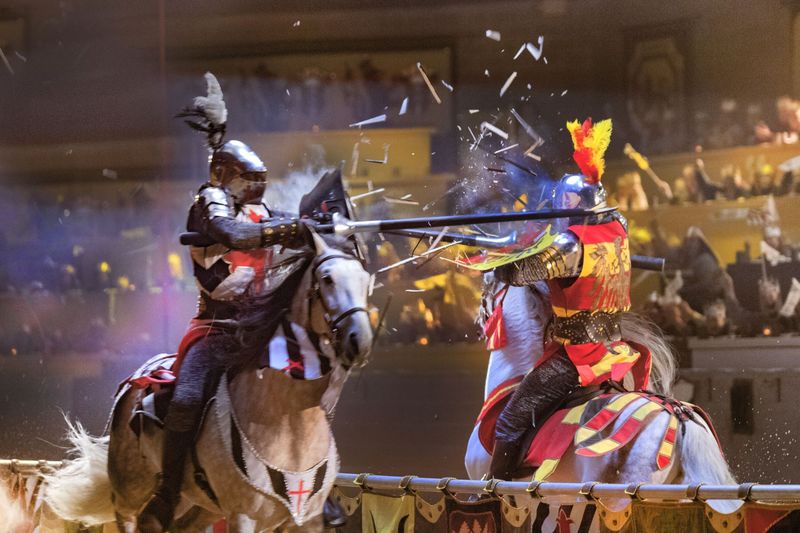
Herald trumpets announced your entry into a massive castle arena where knights on horseback jousted for your entertainment. Servers dressed as wenches and pages delivered roasted chicken and tomato soup in metal bowls – no utensils allowed! Guests ate with their hands while cheering for their section’s designated champion.
Colored flags and banners hung from the ceiling as trained falcons swooped over diners’ heads. The king and princess presided over the festivities from a royal box while guests sipped from oversized goblets.
Financial challenges and rising production costs forced many locations to close throughout the 2010s. The remaining venues operate with reduced spectacle, leaving behind the full medieval experience that once transported diners to a romanticized version of the Middle Ages.
7. Sambo’s: Pancake Houses with Problematic Branding
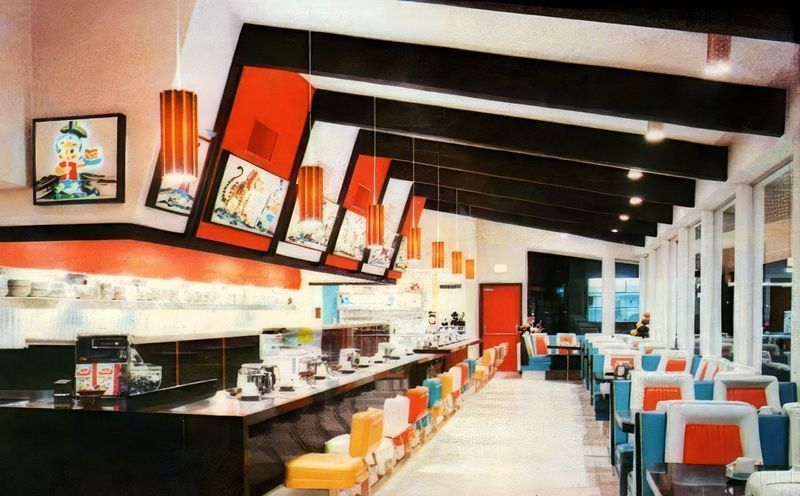
Bright purple booths and colorful storybook murals once greeted families at this nationwide pancake chain. Golden syrup towers adorned each table, ready to drizzle over stacks of fluffy pancakes served around the clock.
Founded in 1957, Sambo’s rapidly expanded to over 1,100 locations in the 1970s. The restaurants featured illustrations from the children’s story “Little Black Sambo,” which depicted racial stereotypes that became increasingly recognized as offensive.
Growing public awareness about racial insensitivity led to widespread backlash against the brand. By the early 2000s, nearly all locations had closed or rebranded. The controversy surrounding Sambo’s demonstrates how cultural awakening can rightfully doom restaurant concepts built on insensitive imagery.
8. Planet Hollywood: Dining Among Movie Stars (Sort Of)
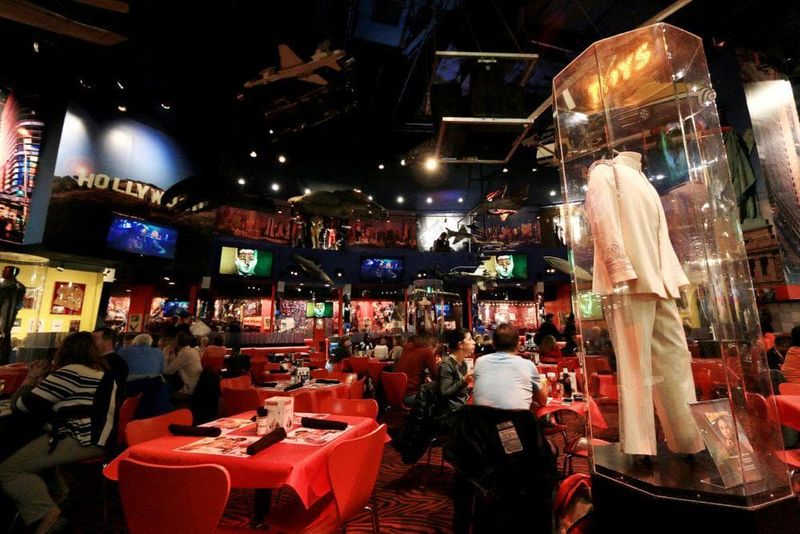
Movie memorabilia covered every inch of wall space – Arnold Schwarzenegger’s Terminator jacket hung above your table while Sylvester Stallone’s boxing gloves gleamed in a nearby display case. Screens played endless film clips as servers delivered burgers named after celebrity investors Bruce Willis, Demi Moore, and Arnold Schwarzenegger.
The restaurants featured red carpet entrances and Hollywood premiere-style décor. Tourists lined up for hours hoping to spot a famous face among the diners, though celebrity sightings were rare despite the star-studded ownership.
After explosive growth in the 1990s, the chain’s ambitious expansion proved unsustainable. Most locations closed by the 2010s as the novelty wore off and food quality couldn’t compete with less gimmicky restaurants. Only a handful of locations remain, mostly in tourist destinations.
9. Hot Shoppes: Where 1950s Nostalgia Served Comfort Food
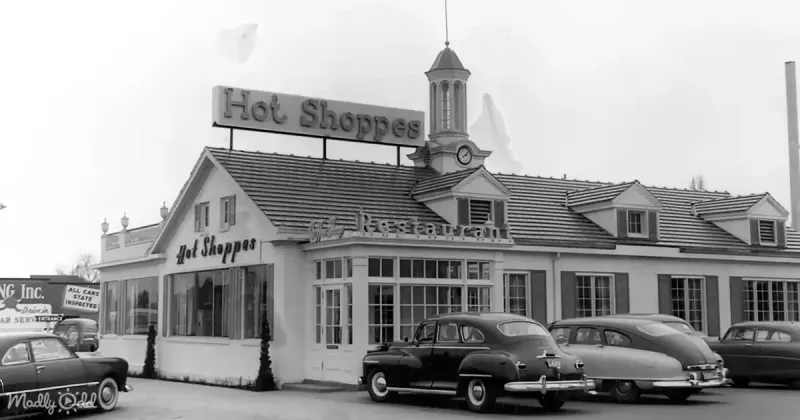
Chrome-trimmed booths lined the walls while uniformed carhops delivered trays that hooked onto partially rolled-down car windows. Founded by J. Willard Marriott in 1927, Hot Shoppes became a beloved institution during America’s post-war boom.
Families gathered around tables to enjoy signature dishes like the Mighty Mo burger and Orange Freeze milkshakes. The restaurants featured soda fountains where teenagers perched on spinning stools, sharing malts with two straws.
As fast food chains with drive-thru windows proliferated in the 1970s, Hot Shoppes’ full-service model became outdated. The Marriott corporation gradually phased out the restaurants to focus on their hotel business. By the 1980s, these once-ubiquitous diners had largely disappeared, taking their nostalgic Americana charm with them.
10. Howard Johnson’s: The Orange-Roofed Roadside Legend
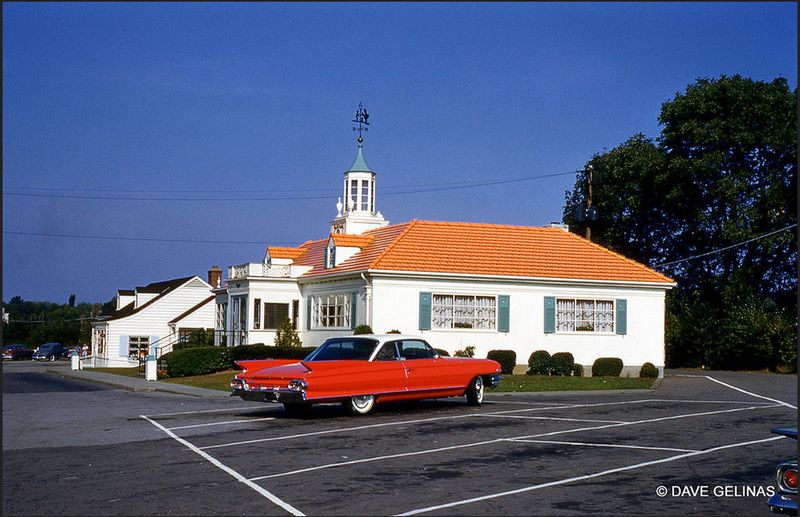
Distinctive orange roofs and turquoise spires beckoned weary travelers from highways across America. Inside, families slid into vinyl booths to enjoy comfort food classics and the chain’s famous 28 flavors of ice cream.
Road trips in mid-century America weren’t complete without stopping at a HoJo’s. Children eagerly anticipated the clam strips and fried chicken while parents appreciated the reliable quality and clean restrooms at every location.
At its peak, over 1,000 Howard Johnson’s restaurants dotted the American landscape. The rise of fast food and changing travel habits gradually eroded their customer base. The last Howard Johnson’s restaurant closed in 2017, marking the end of a beloved American institution that had served hungry travelers for nearly a century.
11. Chi-Chi’s: The Fiesta That Faded Away
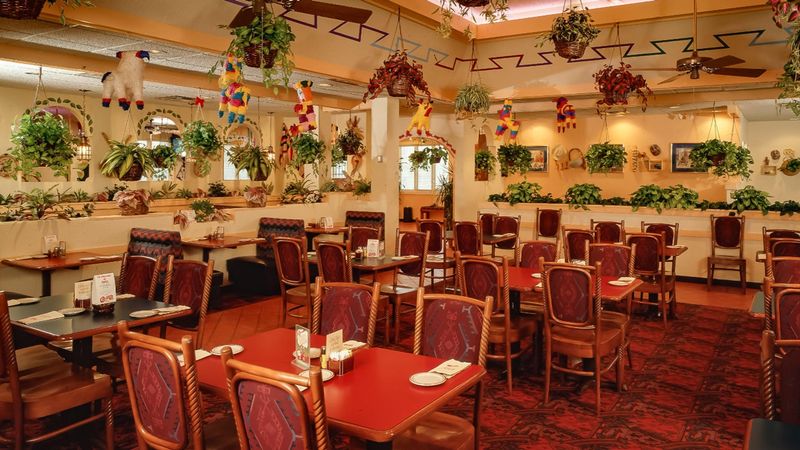
Birthday celebrations reached legendary status when sombrero-wearing staff surrounded your table singing “¡Ay, Chihuahua!” while placing a sombrero on the guest of honor’s head. Colorful paper flags hung from the ceiling as mariachi music played in the background.
Founded in 1975, Chi-Chi’s introduced many Americans to Tex-Mex cuisine through its festive atmosphere and generous portions. Families flocked to enjoy chimichangas, nachos, and the chain’s signature fried ice cream dessert served in a cinnamon-sugar tortilla bowl.
Tragedy struck in 2003 when a hepatitis A outbreak linked to green onions at a Pennsylvania location sickened over 600 people and caused four deaths. The scandal, combined with bankruptcy proceedings, led to Chi-Chi’s complete withdrawal from the U.S. market by 2004.
12. Kenny Rogers Roasters: The Country Star’s Chicken Empire
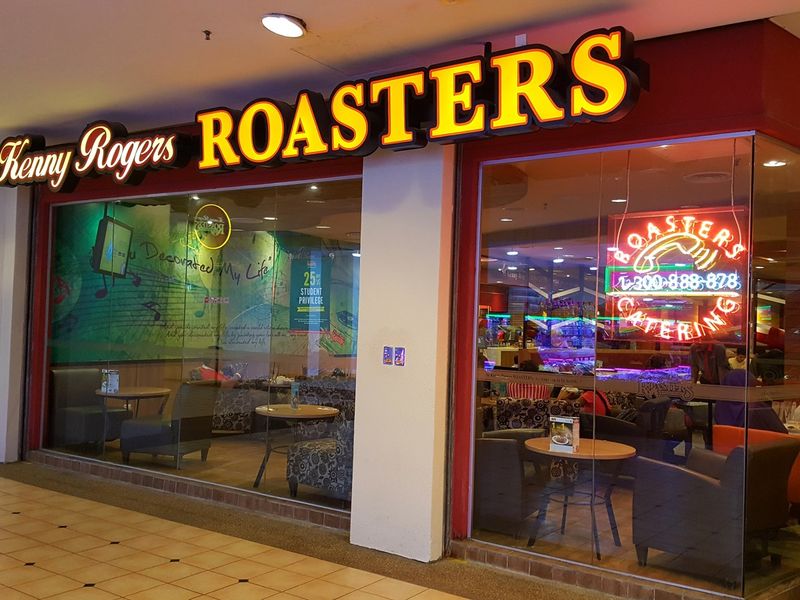
Country music played softly as diners enjoyed wood-fired rotisserie chicken in rustic surroundings. Founded by country music legend Kenny Rogers in 1991, the chain built its reputation on healthier alternatives to traditional fried chicken.
Restaurant walls featured memorabilia from Rogers’ music career, including gold records and concert photos. Some locations even hosted occasional live country music performances during special events, creating a Nashville-inspired dining experience.
Despite early success and a famous Seinfeld episode featuring the restaurant’s distinctive red neon sign, Kenny Rogers Roasters couldn’t compete with established chicken chains. After filing for bankruptcy in 1998, the brand gradually disappeared from American landscapes. Ironically, while nearly extinct in the U.S., the chain thrives today in Asia under different ownership.
13. Little Chef: Britain’s Beloved Roadside Pit Stop
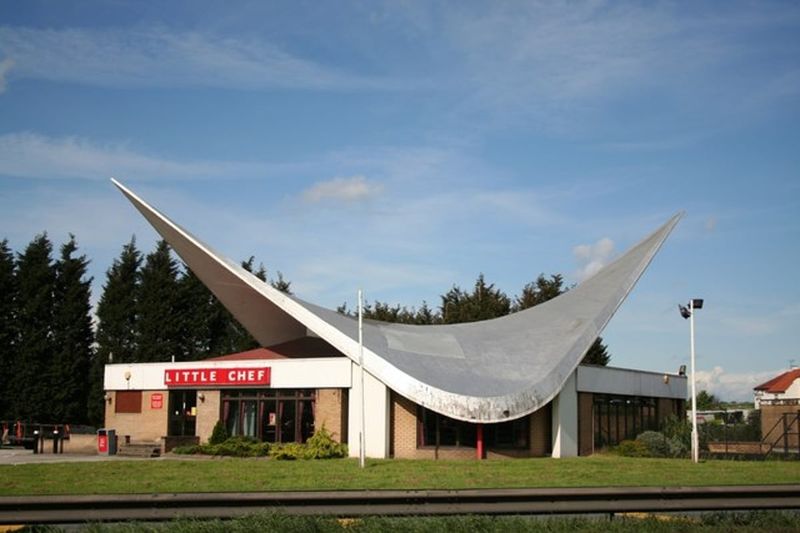
Portly mascot “Fat Charlie” welcomed motorists to these distinctively shaped red-and-white buildings dotting British highways. For generations of UK travelers, Little Chef provided a reliable respite from long journeys with its familiar menu of English breakfast classics and comfort foods.
The chain’s signature Olympic Breakfast – a hearty plate of eggs, bacon, sausage, beans, and toast – fueled countless family road trips. Children received special attention with dedicated kids’ menus and activity packs to keep them entertained.
At its peak, over 400 Little Chef restaurants operated across the United Kingdom. Changing travel habits and competition from fast food outlets gradually eroded its customer base. The last Little Chef closed in 2018, ending 60 years of roadside dining tradition that had become woven into British cultural memory.
14. Casa Bonita: The Pink Palace of Mexican Entertainment
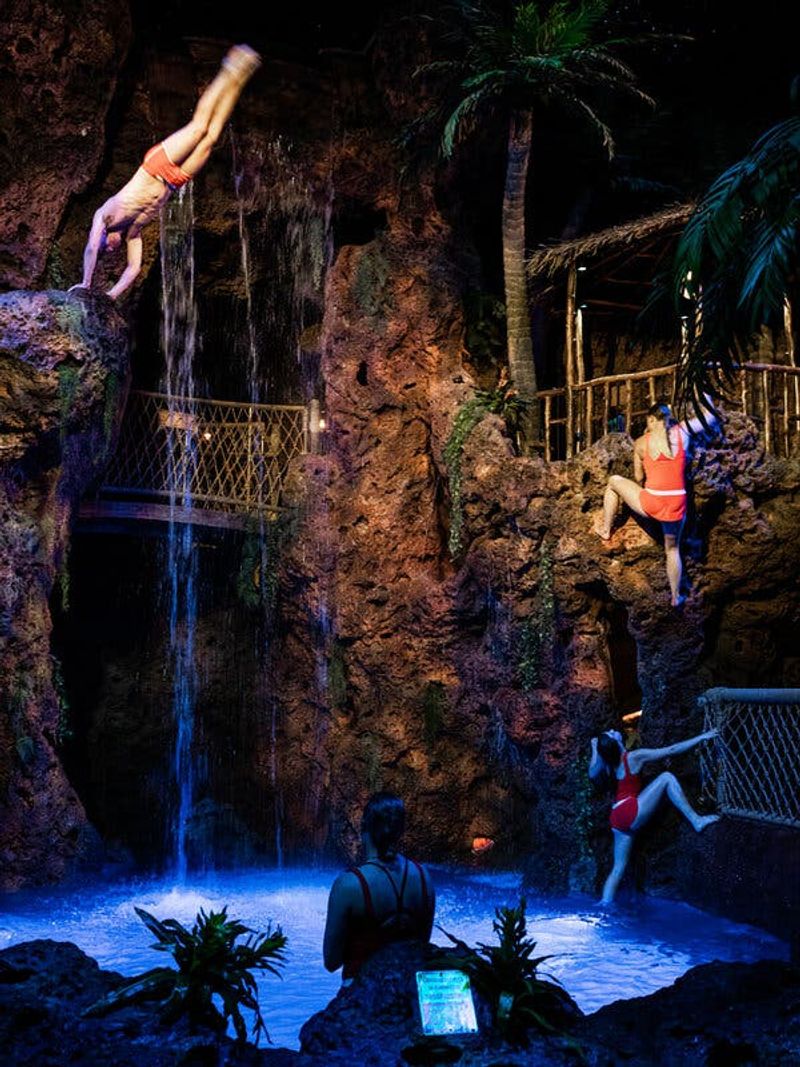
A 30-foot indoor waterfall served as the centerpiece where cliff divers performed hourly shows, plunging into the pool below as diners gasped. This massive 52,000-square-foot Denver institution combined all-you-can-eat Mexican food with entertainment that included puppet shows, mariachi bands, and flame jugglers.
Guests explored mysterious caves, watched gunfights in the replica plaza, and visited Black Bart’s hideout. Children begged parents to let them get their faces painted or try their luck at the arcade after finishing their sopaipillas.
The original Casa Bonita filed for bankruptcy in 2021 after closing during the pandemic. While the Denver location has been purchased by South Park creators Trey Parker and Matt Stone for renovation, the chain that once operated multiple locations across the Southwest has disappeared.
15. Bennigan’s: The Irish Pub That Wasn’t Really Irish
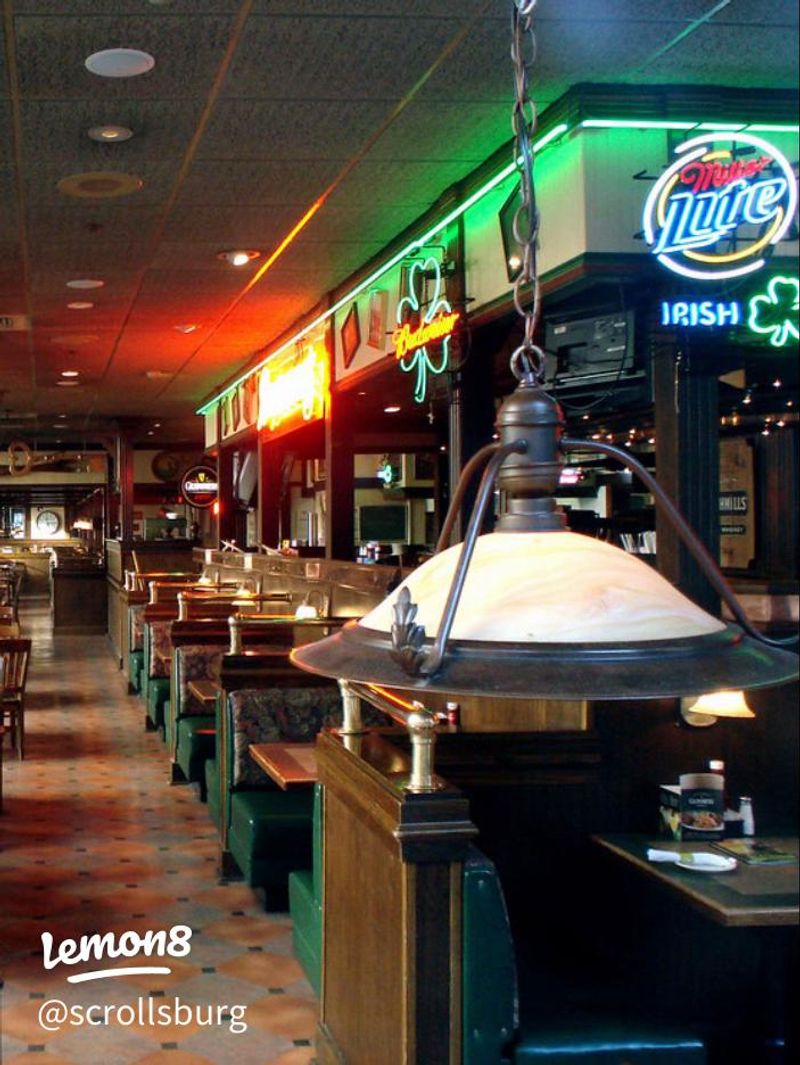
Faux Tiffany lamps hung over dark wood tables where servers in suspenders delivered potato skins and Monte Cristo sandwiches. Despite minimal authentic Irish connections, Bennigan’s created a pub-like atmosphere that became a staple of suburban dining in the 1980s and 90s.
The restaurant’s walls featured an eclectic mix of memorabilia ranging from antique advertisements to sports equipment. Their dessert menu starred the legendary Death by Chocolate, a massive confection that challenged even the most dedicated sweet tooth.
Bennigan’s parent company filed for bankruptcy in 2008, causing the overnight closure of hundreds of locations. While a handful of franchised restaurants continue operating under new ownership, the ubiquitous casual dining chain that once anchored shopping centers across America has largely vanished.
16. Bob’s Big Boy: Where the Pompadoured Mascot Ruled
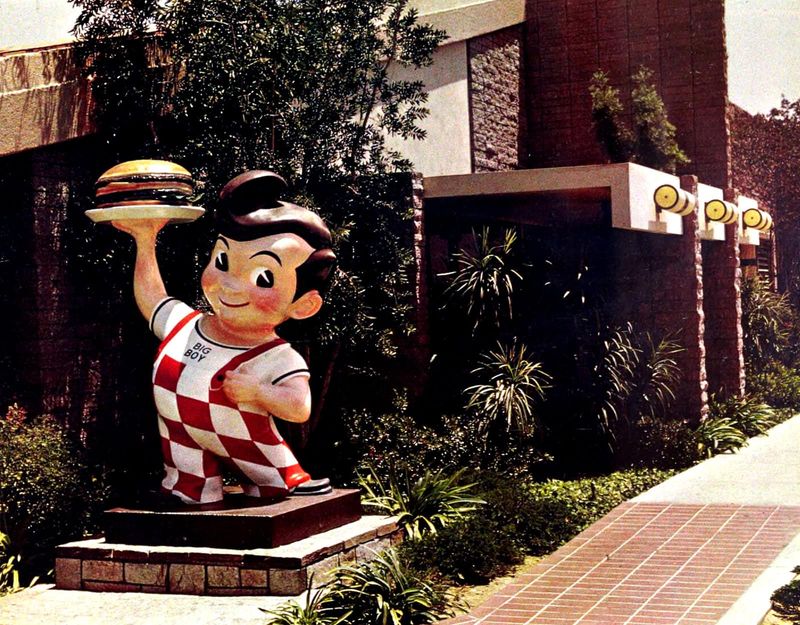
The iconic 7-foot fiberglass statue of a chubby boy in red-and-white checkered overalls holding a hamburger greeted hungry patrons outside. Inside, chrome-trimmed booths and checkerboard floors created the quintessential American diner experience that defined roadside dining for generations.
Carhops delivered trays to vehicles during the chain’s heyday in the 1950s and 60s. Teenagers gathered after football games to share massive double-decker Big Boy burgers and creamy milkshakes served in tall glasses with the extra in metal mixing containers.
Once numbering over 400 locations nationwide, most Bob’s Big Boy restaurants disappeared by the 2000s. Only a handful of historic locations remain, including the famous Toluca Lake, California restaurant that continues to host classic car shows in its parking lot every Friday night.
17. Ponderosa Steakhouse: Cowboy Dining on a Budget
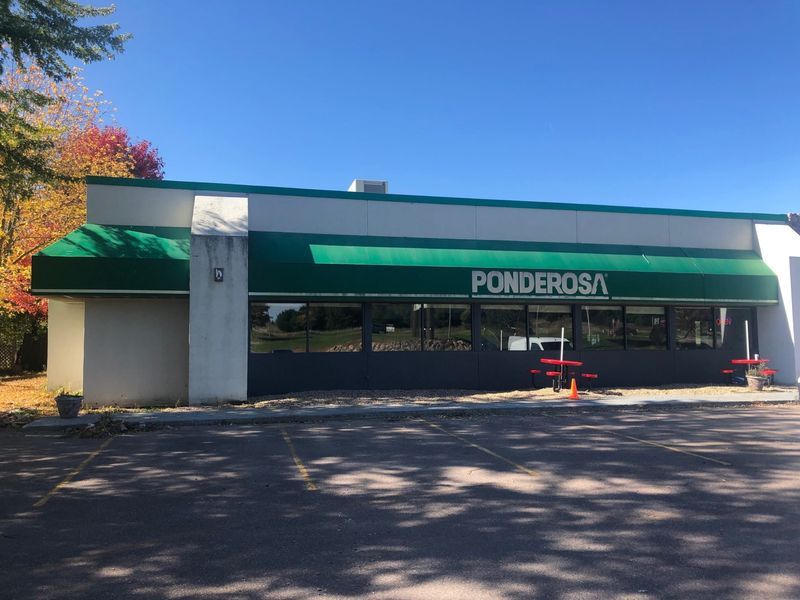
Rustic wooden interiors with wagon wheel chandeliers set the Western mood as families lined up at the expansive buffet. Named after the fictional ranch in the TV show “Bonanza,” Ponderosa offered affordable steaks and an all-you-can-eat salad bar that stretched for yards.
Servers in cowboy-inspired uniforms delivered sizzling plates while country music played softly in the background. Children received special Ponderosa Sheriff badges and coloring placemats featuring cartoon cowboys and horses.
At its peak, over 500 locations operated throughout the United States. Changing consumer preferences and competition from other buffet chains led to steady decline. By 2020, only a handful of Ponderosa restaurants remained, mostly in small towns where the affordable steak-and-buffet concept still drew loyal customers looking for hearty meals at reasonable prices.
18. El Torito: The Mexican Fiesta That Faded Away
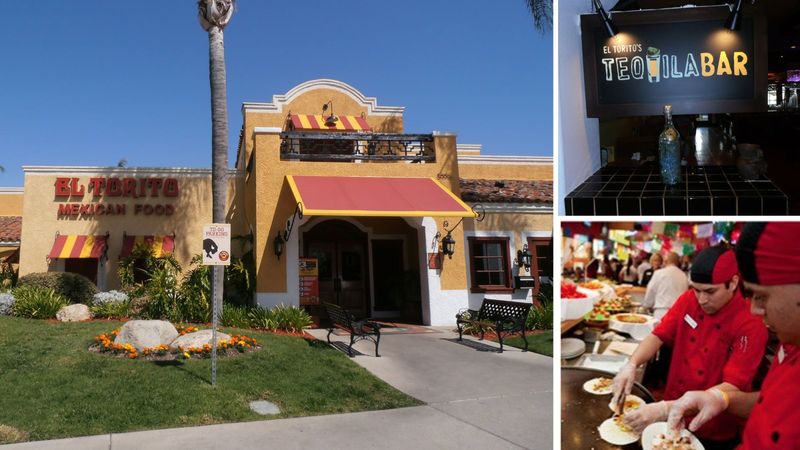
Spanish tile fountains burbled in the entryway while strolling mariachi musicians serenaded diners at their tables. Founded in 1954, El Torito introduced many Americans to Mexican cuisine beyond basic tacos through theatrical tableside guacamole preparation and flaming fajitas.
Colorful piñatas hung from ceilings and serape-inspired fabrics adorned booth seating. The restaurant’s signature margaritas arrived in distinctive glassware with salt-crusted rims, often accompanied by tableside tequila presentations.
El Torito’s parent company faced multiple bankruptcies in the 2000s, leading to widespread closures. Competition from more authentic Mexican restaurants and changing dining preferences contributed to its decline. While a few locations still operate in California, the chain that once dominated Mexican-themed dining across America has largely disappeared.
19. Luby’s Cafeteria: Texas-Sized Portions on Sliding Trays
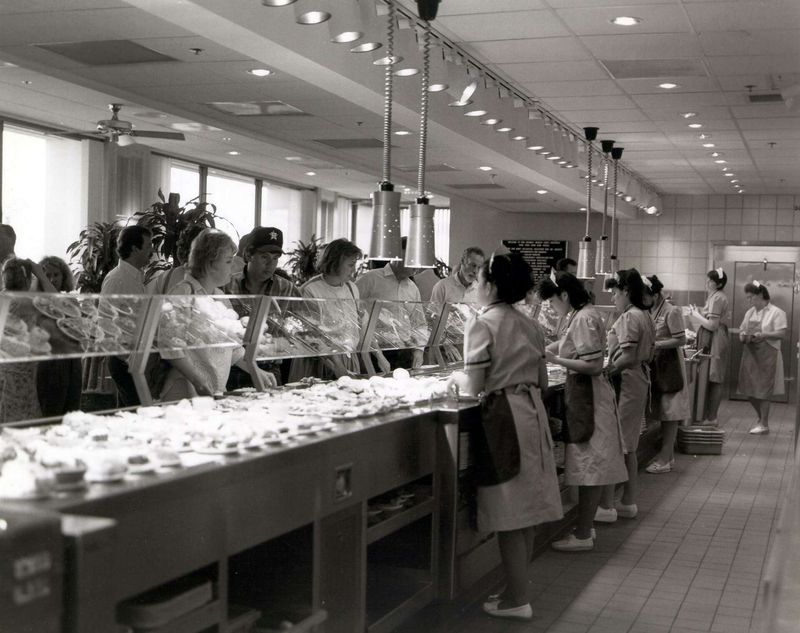
Hungry diners grabbed plastic trays and slid them along stainless steel rails, pointing at their desired portions of comfort food classics. Founded in San Antonio in 1947, Luby’s became a Texas institution known for its LuAnn Platter – a meat, two vegetables, and bread that inspired the character name in the animated show “King of the Hill.”
The cafeterias featured Southwestern-inspired décor with warm colors and Texas memorabilia. Elderly regulars arrived daily for early-bird specials, while families gathered after church on Sundays for affordable meals served with a side of nostalgia.
After decades as the largest cafeteria chain in Texas, Luby’s parent company dissolved in 2021. Nearly all locations have closed, marking the end of the self-service cafeteria era that once defined casual dining for generations of Texans.

